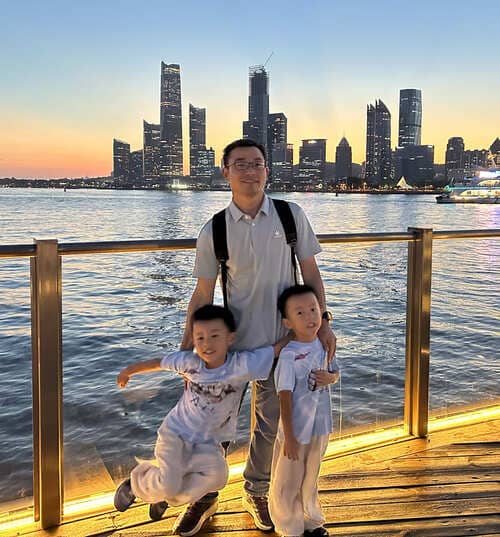Squinting guests and blown-out photos at your events? Harsh lighting glare can really ruin the atmosphere and comfort. Thankfully, there are better ways to illuminate.
Choose glare-free lighting by using indirect sources (bouncing light), selecting fixtures with built-in diffusion (like LED balloon lights), or using shields. Proper placement away from direct sightlines is also crucial.

Glare is more than just a minor annoyance; it seriously impacts guest comfort, safety, and the overall quality of the event experience. Let's explore why glare is such a problem and how you can actively choose lighting solutions that prevent it.
Why is Glare Such a Big Problem at Events Anyway?
Think glare is just a small inconvenience? Wondering why lighting experts emphasize controlling it? Glare has significant negative impacts you should avoid.
Glare causes visual discomfort, makes it hard to see details or faces, creates safety hazards by obscuring obstacles, ruins photos/videos with hotspots, and generally detracts from the intended ambiance.

Let's break down why glare is so detrimental, based on what I've seen over the years:
- Visual Discomfort: Direct glare forces people to squint or look away. It's physically uncomfortable, especially over extended periods. Think of trying to talk to someone with a bright light right behind their head.
- Reduced Visibility: Ironically, too much poorly directed light can make it harder to see. Glare can wash out details, create deep shadows elsewhere, and make it difficult for eyes to adjust. I remember a conference where attendees couldn't properly see the presentation screen due to glare from poorly placed stage lights.
- Safety Hazards: Glare can hide trip hazards like cables, steps, or uneven surfaces, especially in dimly lit areas or pathways. This is a major concern for event safety and liability. Providing even, non-glaring light is essential for safe navigation. This is critical in settings like road construction zones too, a key area for our lights.
- Poor Photography/Videography: Harsh glare creates bright hotspots and dark shadows in photos and videos. It makes subjects look unflattering and ruins the visual record of the event. Soft, even lighting is much preferred by photographers.
- Atmosphere Killer: Glare feels harsh and unpleasant. It counteracts efforts to create a warm, inviting, or sophisticated atmosphere. Soft lighting feels more welcoming and high-end.
Clearly, controlling glare isn't just a detail – it's fundamental to a successful event lighting plan.What Actually Makes Lighting Glare-Free?
Confused about why some lights cause glare and others don't? Want to understand the technical side of controlling brightness? It comes down to the source.
Lighting becomes glare-free when you avoid a direct view of the intensely bright light source (filament or LED chip). This is achieved through indirect lighting, diffusion, shielding the source, or reducing overall intensity.

It's fairly simple physics, but understanding it helps you choose the right fixtures and techniques: - Indirect Lighting: Instead of pointing a light directly at the area or people, you bounce it off another surface, like a ceiling or wall. The surface becomes the light source, which is much larger and less intense than the original bulb, reducing glare significantly. Uplighting is a common example.
- Diffusion: This involves placing a translucent material between the light source and the viewer. The material scatters the light rays, spreading the brightness over a larger area and softening the output. This is the principle behind lampshades, softboxes in photography, and importantly, LED balloon lights. Our balloon envelopes act as large diffusers, creating that signature soft, even, 360-degree illumination that is inherently glare-free. It's a core part of our design philosophy at Moonlightia.
- Shielding/Cutoff: Fixtures can be designed with shields, louvers, or deep reflectors (sometimes called 'cutoff optics') that block the direct view of the light source from certain angles. Think of well-designed streetlights that illuminate the ground but don't shine into windows.
- Dimming: Simply reducing the intensity of the light source will reduce the potential for glare. However, you still need enough light for the task or ambiance.
Often, the best solutions combine these methods – for example, using a diffused source aimed indirectly.What Are the Best Glare-Free Lighting Options for My Events?
Ready to choose lights but want to ensure they won't cause glare? Looking for specific fixture types known for soft illumination? Here are some top choices.
Excellent glare-free options include indirect uplighting, carefully aimed wash lights, low-intensity string lights, and especially fixtures designed for diffusion, such as high-quality LED balloon lights.

When glare is a major concern, these are the options I typically recommend:- Uplighting: As mentioned, bouncing light off surfaces is a great indirect technique. Use LED uplighters along walls or behind structures for ambient color and light without direct source visibility.
- Wash Lights (Used Carefully): While wash lights can cause glare if aimed directly at people, they can be used effectively when aimed at ceilings, walls, or stages from angles that minimize direct view. Using diffusion filters on them can also help.
- String Lights (with the right bulbs): Low-wattage, warm-white string lights provide lovely ambiance with minimal glare due to their low intensity per bulb. Avoid clear bulbs with bright filaments if glare is a concern.
- LED Balloon Lights: These are arguably one of the most effective solutions for area lighting without glare. Because the entire large surface of the balloon becomes the light source, the intensity per square inch is very low, making it incredibly comfortable on the eyes. They provide broad, shadow-free illumination ideal for tents, outdoor spaces, workshops, emergency scenes, and anywhere people need to see clearly without being blinded. Our Moonlightia balloon lights are specifically engineered for this glare-free performance, combined with durability (IP65) and efficiency. It's why they're trusted in demanding environments like construction and rescue too.
- Architectural Cove Lighting: For permanent installs or high-end temporary builds, hiding linear LED strips in architectural coves provides beautiful, indirect, glare-free light.
By prioritizing these types of fixtures and techniques, you can create beautifully lit events that are also comfortable and safe for everyone.Conclusion
Combat harsh glare by choosing indirect lighting, shielded fixtures, or diffused sources like LED balloon lights. Prioritizing glare control improves guest comfort, safety, and photos.




